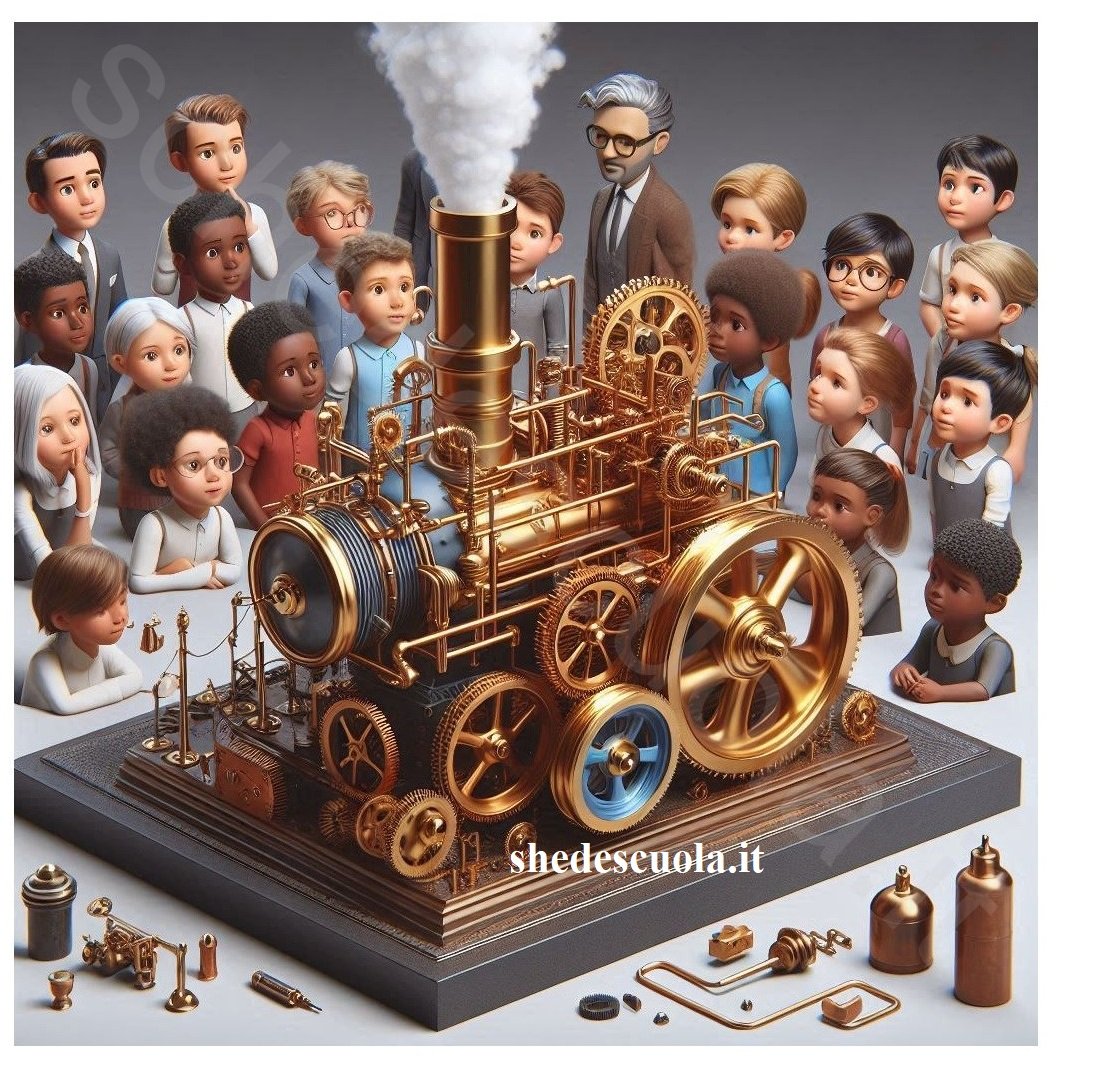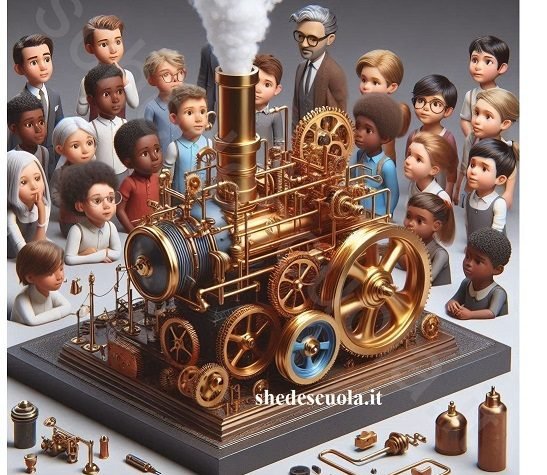James Watt (Greenock, 19 gennaio 1736 – Handsworth, 25 agosto 1819) è stato un ingegnere e inventore scozzese. Nacque in Scozia il 19 gennaio 1736 da genitori presbiteriani. Suo padre era un armatore, mentre sua madre, Agnes Muirhead, proveniva da una famiglia distinta. Watt fu inizialmente istruito a casa da sua madre. Successivamente frequentò la scuola di ingegneria di Greenock, mostrando grande interesse per la matematica, mentre non brillava in greco e latino.
Quando Watt aveva 18 anni, sua madre morì e la salute di suo padre peggiorò. Per questi motivi, Watt si trasferì a Londra, per poi stabilirsi nella città scozzese di Glasgow, dove frequentò l’università. Qui, con l’aiuto di tre professori, aprì un laboratorio di manifattura presso l’università. Durante questo periodo, strinse amicizie significative con alcuni dei principali esponenti della comunità scientifica scozzese. Si legò particolarmente a Joseph Black, che introdusse poi il concetto di calore latente.
Nel 1764, Watt, notando le perdite di vapore nelle macchine di Newcomen, sviluppò un modello di condensatore separato dal cilindro, riducendo così le perdite. Nel 1768, insieme a John Roebuck, costruì il suo modello di macchina a vapore.
Nel 1772 si trasferì a Birmingham, dove, nel 1775, entrò in stretto contatto con Matthew Boulton; Watt cercò di commercializzare la sua invenzione. La diffusione però avvenne solo con l’inizio di una collaborazione trentennale con Boulton. Nel 1782 brevettò la macchina a doppio effetto e il regolatore di forza centrifuga per il controllo automatico della macchina; il parallelogramma articolato risale al 1784. In questo stesso periodo, Watt introdusse un’unità di misura chiamata “potenza cavallo” per confrontare la potenza prodotta dalle macchine a vapore, che è ancora utilizzata oggi per indicare la potenza dei motori dei veicoli a motore.
Nel 1785 fu infine invitato a unirsi alla Royal Society di Londra. Nel 1794 si unì alla Lunar Society di Birmingham, dalla quale si ritirò nel 1800. Watt morì nel 1819 e i suoi resti furono sepolti nel cimitero parrocchiale di Santa Maria a Handsworth, nella contea del West Midlands.
James Watt (Greenock, January 19, 1736 – Handsworth, August 25, 1819) was a Scottish engineer and inventor.He was born in Scotland on January 19, 1736 to Presbyterian parents. His father was a shipowner, while her mother, Agnes Muirhead, came from a distinct family [1]. Watt was initially educated at home by her mother, but later attended Greenock engineering school, showing great interest in mathematics, while he did not shine in Greek and Latin.
When Watt was 18, her mother died and his father’s health deteriorated. For these reasons, Watt left for London, then settled in the Scottish city of Glasgow, where he attended university. Here, with the help of three professors, he opened a manufacturing workshop at the university. During this period, he made significant friendships with some of the leading exponents of the Scottish scientific community, particularly tying up with Joseph Black, who will then introduce the concept of latent heat.
In 1764, Watt, noting the vapor losses in Newcomen’s machines, developed a condenser model separate from the cylinder, thus reducing the losses. In 1768, with John Roebuck, he built his model of steam engine.
In 1772 he moved to Birmingham, where, in 1775, he came into close contact with Matthew Boulton; Watt tried to commercialize his invention, but the diffusion took place only with the beginning of a thirty-year collaboration with Boulton. In 1782 he patented the double-acting machine and the centrifugal force regulator for the automatic control of the machine; the articulated parallelogram dates back to 1784. In this same period Watt introduced a unit of measurement called “horsepower” to compare the power produced by steam engines [2], which is still used today to indicate the power of motor vehicle engines. .
In 1785 he was finally invited to join the London Royal Society. In 1794 he joined the Lunar Society of Birmingham, from which he retired in 1800. Watt died in 1819 and his remains were buried at the parish cemetery of Santa Maria in Handsworth, in the county of the West Midlands.

Segui https://rimediomeopatici.com/afte/
Segui anche https://riciclareperrisparmiare.it/varie/sughero/
Leggi https://ricettedirita.it/contorni/dieta-ipercolesterolemia-contorni/6752-cavolfiore-in-umido/
Leggi anche https://schedescuola.it/gioco-della-dama/
